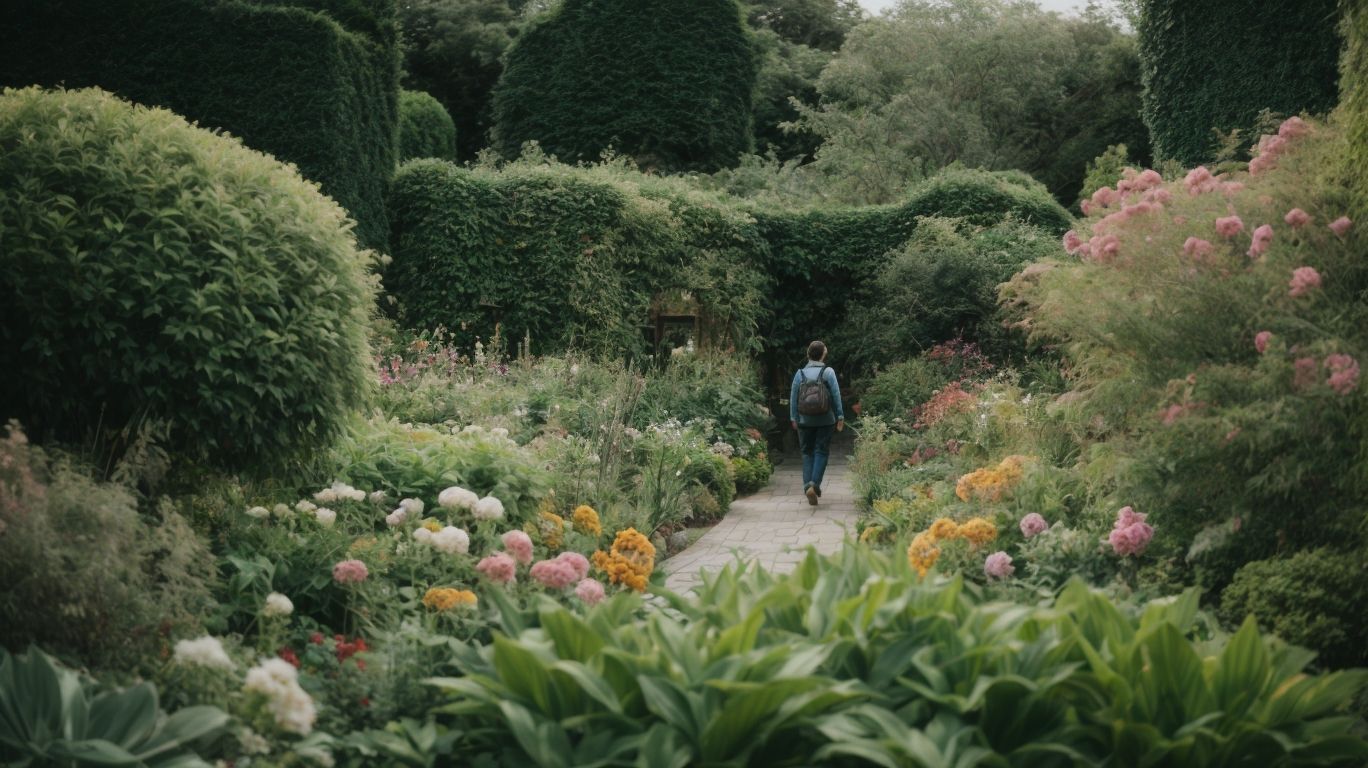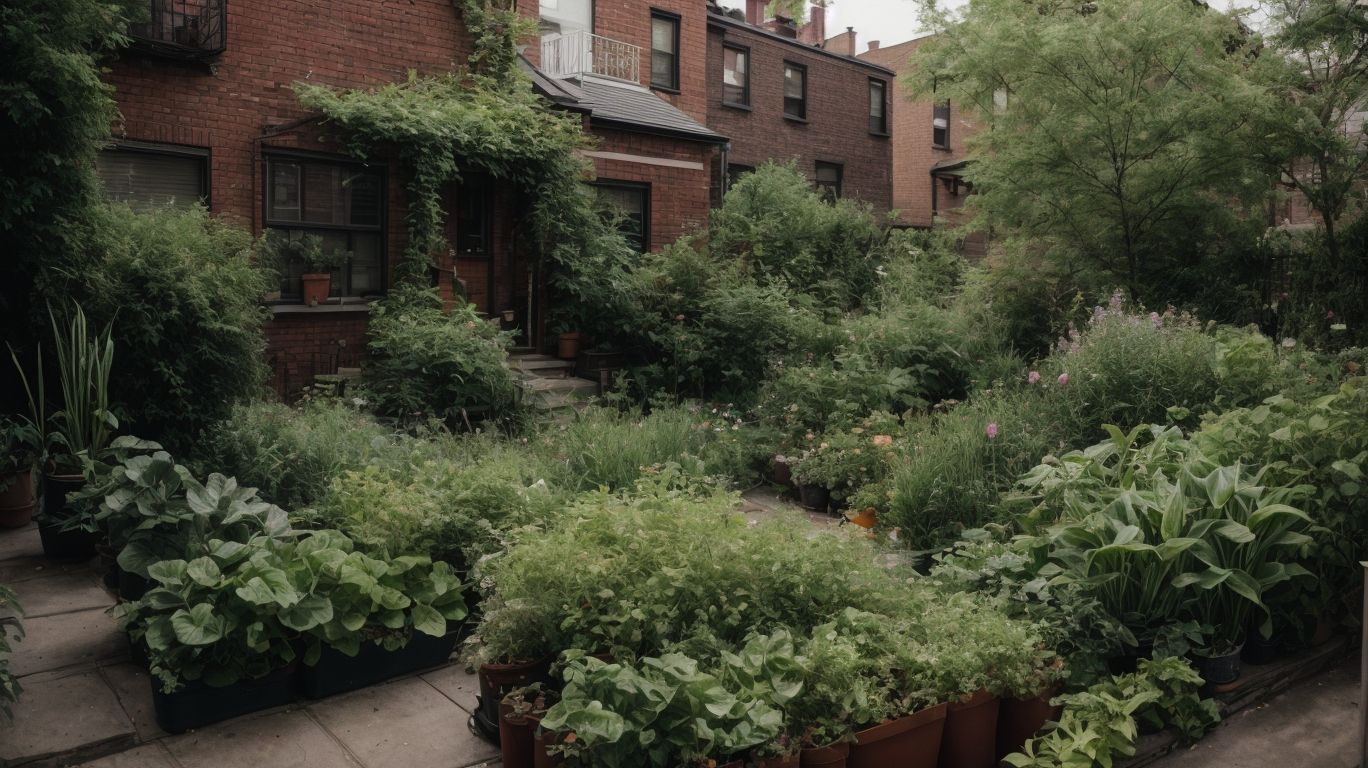Welcome to our comprehensive guide on gardening zones, specifically focusing on Arlington, VA. In this article, we will explore everything you need to know about gardening in Arlington, including the concept of gardening zones, how they are determined, and the specific gardening zone of Arlington, VA. We will also delve into the USDA Plant Hardiness Zone Map, the climate of Arlington, and the average annual temperature and precipitation.
We will provide insight into the best plants to grow in Arlington, including vegetables, flowers, trees, and shrubs that thrive in this region. We will share valuable tips for gardening in Arlington, such as protecting plants from extreme temperatures and dealing with common pests and diseases. Whether you are a seasoned gardener or just starting out, this article aims to equip you with essential knowledge for successful gardening in Arlington, VA.
Key Takeaways:
What Are Gardening Zones?
Gardening zones, also known as planting zones or growing zones, refer to the geographical areas categorized based on their climate and temperature patterns, indicating the kinds of plants that are likely to thrive in those regions.
The United States Department of Agriculture (USDA) Map is widely used to delineate these zones, helping gardeners choose plants that are suited to the typical temperature and climate conditions of their area.
In Virginia, understanding the Virginia Planting Zones is crucial for any gardening enthusiast, as it guides the selection of plants, considering factors like frost dates, humidity levels, and average annual temperatures. These zones serve as a vital tool for successful gardening, ensuring that plants have the best possible chance for healthy growth and blossoming in their specified areas.
How Are Gardening Zones Determined?
Gardening zones are determined using the USDA Plant Hardiness Zone Map, which divides the United States into different plant hardiness zones based on the average annual minimum temperatures experienced in each region.
For instance, in Virginia, this map is a crucial tool for gardeners and horticulturists to understand the climatic conditions that influence plant growth. By identifying their specific zone, they can select plants that are well-suited to thrive in their area.
The USDA Plant Hardiness Zone Map provides a valuable reference for ensuring the success of gardening endeavors and maintaining healthy, flourishing landscapes in Virginia and across the nation.
What Is the USDA Plant Hardiness Zone Map?
The USDA Plant Hardiness Zone Map, unveiled by the United States Department of Agriculture, is a valuable tool that provides a systematic framework for understanding the different plant hardiness zones across the US, based on the average annual minimum temperatures and local climate conditions.
By dividing the United States into 13 zones, ranging from the coldest (Zone 1) to the warmest (Zone 13), this map offers crucial information for gardeners, farmers, and horticulturists to make informed decisions about which plants can thrive in their specific region. The map’s accuracy is attributed to its consideration of various environmental factors, such as elevation, proximity to large bodies of water, and urban heat effects that significantly affect the local climate. Utilizing plant hardiness zones helps ensure the successful growth and cultivation of a wide variety of plants, contributing to the overall health and biodiversity of ecosystems.
What Is the Climate in Arlington, VA?
Arlington, VA, located in Northern Virginia and in close proximity to Alexandria, experiences a temperate climate characterized by distinct seasons, with warm summers and relatively mild winters.
The summer temperature in Arlington usually ranges between 70°F and 90°F, with the occasional heatwave. Winter temperatures often remain above freezing, with average snowfall of around 17 inches.
Spring and autumn bring a vibrant display of changing foliage and comfortable temperatures, making it an ideal time for outdoor activities. The Chesapeake Bay and Potomac River influence the local climate with their moderating effects, preventing extreme weather conditions from prevailing.
What Is the Gardening Zone of Arlington, VA?
The gardening zone of Arlington, VA, as determined by the Virginia Cooperative Extension Office, corresponds to the USDA Hardiness Zone X, signifying the specific plant hardiness zone within the US that is most suitable for cultivating a variety of plant species.
Arlington, VA is situated in an area that experiences distinctive climate conditions attributed to its USDA Hardiness Zone X rating. This designation indicates that the region’s average annual extreme minimum temperature falls within a specific range, impacting the types of plants that can thrive in this particular locale.
Being in USDA Hardiness Zone X, Arlington, VA offers a favorable environment for a diverse selection of plants, including those suited for temperate, subtropical, and tropical climates, presenting a range of gardening opportunities for local enthusiasts.
What Is the Average Annual Temperature in Arlington, VA?
The average annual temperature in Arlington, VA, reflects the Virginia experiences, with typical highs and lows ranging from 40°F to 85°F, contributing to the overall local climate conditions suitable for gardening.
Throughout the year, Arlington, VA, experiences a diverse range of temperatures, with summers bringing warm, sunny days and occasional heatwaves, while winters dip into cooler conditions with some snowfall. Spring and fall offer mild and pleasant weather, making the region conducive to a variety of outdoor activities.
The temperature fluctuates in tandem with Virginia’s climate patterns, providing residents and visitors with a memorable and varied experience throughout the year.
What Is the Average Annual Precipitation in Arlington, VA?
The average annual precipitation in Arlington, VA, plays a crucial role in shaping the local climate conditions, with an average rainfall of XX inches, contributing to the overall suitability for gardening and plant growth.
With a relatively moderate amount of rainfall, Arlington experiences diverse weather patterns throughout the year. This consistent precipitation provides essential nourishment for a wide variety of plants, making it a favorable environment for gardening enthusiasts. The adequate moisture levels support vibrant, flourishing gardens and contribute to the lush greenery that characterizes the region. Gardeners benefit from the predictable rain, enabling them to plan their planting activities effectively and nurture a thriving and visually appealing landscape.
What Are the Best Plants to Grow in Arlington, VA?
The best plants to grow in Arlington, VA, encompass a diverse range of species, including native perennials, ornamental grasses, and flowering shrubs, requiring specific plant health care, pruning plans, and mulching strategies to thrive in the local climate.
Native perennials such as Virginia bluebells (Mertensia virginica), Columbine (Aquilegia canadensis), and Eastern Red Columbine (Aquilegia canadensis) are well-suited for the natural growing conditions in Arlington, VA. They thrive when provided with well-draining soil and regular watering.
Ornamental grasses like Maiden Grass (Miscanthus sinensis) and Fountain Grass (Pennisetum setaceum) add texture and movement to the garden and benefit from annual pruning and division.
Flowering shrubs such as Azaleas and Rhododendrons flourish with acidic soil and benefit from mulching to retain moisture and regulate soil temperature.
Implementing plant health care practices, including regular inspection for pests and diseases, proper watering, and fertilization, is essential for the vitality of these plants. Developing pruning plans tailored to each species ensures proper growth and encourages flowering.
Utilizing mulching strategies, such as applying a layer of organic mulch around the base of the plants, aids in moisture retention, weed suppression, and soil insulation, contributing to the overall health and resilience of the plants. When combined, these specific care measures contribute to the successful cultivation of the best plants in Arlington, VA.
What Types of Vegetables Can Be Grown in Arlington, VA?
Arlington, VA’s favorable Virginia Planting Zone, as indicated by the USDA Planting Map, supports the cultivation of a variety of vegetables such as tomatoes, peppers, and cucumbers, tailored to thrive in the local climate conditions.
The Virginia Planting Zone in Arlington, VA falls within zones 6b and 7a, making it conducive for growing a diverse range of vegetables. These include leafy greens like lettuce and spinach, root vegetables such as carrots and radishes, and cruciferous vegetables like broccoli and cauliflower.
The region’s moderate climate allows for the successful cultivation of beans, peas, and squash. With the proper attention to soil quality and planting schedules, Arlington’s gardeners can enjoy a bountiful harvest of fresh, home-grown produce.
What Types of Flowers Can Be Grown in Arlington, VA?
A diverse array of flowers, including roses, lilies, and daisies, can be successfully grown in Arlington, VA, attributed to the favorable Virginia Planting Zones depicted in the USDA Planting Map, complemented by the local climate conditions.
Arlington’s planting zone of 7a, as per the USDA map, provides an ideal environment for various perennial and annual flowers. Some suitable options for cultivation in this region include tulips, daffodils, and peonies, which thrive in the cooler temperatures of early spring.
Additionally, hydrangeas, azaleas, and rhododendrons are well-suited for Arlington’s acidic soil and humid summers. Gardeners can also consider planting black-eyed Susans and purple coneflowers to attract pollinators and add a pop of color to their gardens.
What Types of Trees Can Be Grown in Arlington, VA?
Arlington, VA’s conducive Virginia Planting Zones, as depicted in the USDA Planting Map, support the growth of various trees such as oak, maple, and dogwood, thriving in the region’s local climate conditions.
The Virginia Planting Zones in Arlington, VA provide an ideal environment for an array of tree species. Trees like the majestic oak, with its broad canopy offering ample shade, are well-suited to the region’s temperate climate. The vibrant colors of the maple trees during fall add to the picturesque beauty of the area.
The delicate blooms of the dogwood tree, a symbol of both strength and grace, bloom exquisitely in Arlington’s climate.
What Types of Shrubs Can Be Grown in Arlington, VA?
A variety of shrubs, including azaleas, boxwoods, and hydrangeas, find an ideal environment for growth in Arlington, VA, attributed to the favorable Virginia Planting Zones illustrated in the USDA Planting Map and the region’s local climate conditions.
These shrubs are well-suited for the Virginia Planting Zones 7-8 and thrive in the temperate climate of Arlington, VA. Azaleas, known for their vibrant blooms, adapt well to the acidic soil found in the region, while boxwoods, with their dense foliage, make excellent hedges and can withstand occasional periods of drought. Hydrangeas, favored for their large, showy flowers, also flourish in the partially shaded areas common in Arlington, adding beauty to residential landscapes.
What Are Some Tips for Gardening in Arlington, VA?
Gardening in Arlington, VA, requires careful attention to plant health care, tailored pruning plans, and effective mulching strategies to ensure the successful growth and maintenance of plants in the region’s specific climate.
Plant health care is crucial for ensuring that the plants can thrive in the unique conditions of Arlington, VA. This includes regular watering, proper nutrition, and pest control to maintain the overall well-being of the plants. In addition, establishing a suitable pruning plan helps in controlling the growth, improving air circulation, and promoting flowering. It’s essential to prune at the appropriate times to encourage healthy and vigorous growth.
Equally vital is effective mulching, which helps in conserving moisture, suppressing weed growth, and insulating the soil to maintain consistent temperatures. Using organic mulch materials such as shredded leaves or bark can also contribute to the improvement of soil structure and fertility over time, supporting the long-term health of the garden.
How to Protect Plants from Extreme Temperatures?
Protecting plants from extreme temperatures, as indicated by the USDA Planting Map and influenced by local climate conditions, involves employing appropriate insulation, strategic placement, and timely protective coverings to safeguard plant health and vitality.
One of the most effective methods for shielding plants from extreme temperatures in Arlington, VA, is to utilize proper insulation. This can include applying layers of mulch around the base of plants to protect their roots from freezing temperatures and using frost cloth to cover delicate foliage during sudden drops in temperature.
Strategic placement also plays a crucial role in safeguarding plants. By positioning more delicate plants in areas with natural windbreaks or near the south-facing walls of buildings, they can benefit from the extra warmth and protection against harsh winds.
Timely protective coverings, such as burlap or frost blankets, can be used when extreme temperature fluctuations are forecasted. These covers can be placed over plants during the evening and removed during the daytime to prevent overheating. Properly implementing these measures significantly contributes to the longevity and robustness of plants in Arlington’s fluctuating climate.
What Are Some Common Pests and Diseases in Arlington, VA?
Arlington, VA, encounters common pests and diseases that are carefully monitored and managed by the Virginia Cooperative Extension Office, necessitating proactive pest control measures and disease prevention strategies for maintaining plant health.
The most prevalent pests in Arlington, VA, include aphids, Japanese beetles, and whiteflies, which can wreak havoc on crops and ornamental plants. Diseases like powdery mildew, late blight, and tomato spotted wilt virus pose significant threats to agricultural and horticultural productions in the region.
The Virginia Cooperative Extension Office plays a crucial role in providing education and resources to the community, facilitating integrated pest management practices and offering disease-resistant plant varieties. Through workshops, publications, and consultations, the Extension Office give the power tos local growers and gardeners with the knowledge and tools to effectively combat these challenges.
Frequently Asked Questions
What are gardening zones and how do they affect gardening in Arlington, VA?
Gardening zones are geographical areas that are defined by the USDA based on average minimum temperatures. They help gardeners determine which plants will thrive in their area and when to plant them. In Arlington, VA, gardening zones play a crucial role in the success of gardening, as the climate and temperature can vary significantly from other areas.
What is the gardening zone for Arlington, VA?
Arlington, VA is located in gardening zone 7a. This zone is characterized by an average minimum temperature range of 0-5 degrees Fahrenheit. It also has a longer growing season compared to other zones, making it ideal for a wide variety of plants.
What types of plants can I grow in gardening zone 7a in Arlington, VA?
There are many plants that can thrive in gardening zone 7a in Arlington, VA. Some popular choices include peonies, daffodils, azaleas, and tulips. A variety of vegetables such as tomatoes, peppers, and squash can also do well in this zone.
How do I know if a plant is suitable for gardening zone 7a in Arlington, VA?
When selecting plants for your garden, it is important to check their hardiness zone rating. Plants with a hardiness rating of 7 or lower are considered suitable for gardening zone 7a in Arlington, VA. You can also consult with local nurseries or gardening experts for recommendations.
Do gardening zones ever change in Arlington, VA?
Gardening zones are determined based on long-term climate data and are subject to change due to climate change. While the gardening zone for Arlington, VA is currently 7a, it is possible that it may shift in the future. It is important for gardeners to stay updated on any changes in their gardening zone.
Can I still grow plants that are not recommended for gardening zone 7a in Arlington, VA?
It is possible to grow plants outside of their recommended gardening zones, but it may require extra effort and care. You may need to provide additional insulation or protection for the plant during extreme temperatures. It is generally recommended to stick to plants that are suitable for your gardening zone to ensure the best chance of success.


